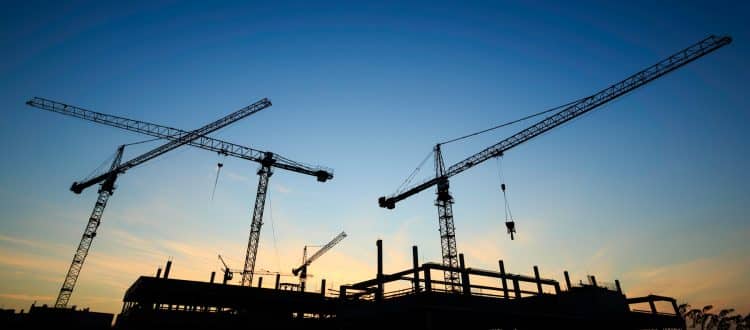Construction Cranes… and Signs
One of the most prominent features of American cities these days is not the tall buildings but what makes them possible. Construction cranes, sprouting skyward like invasive plants in a garden, enable a seemingly endless expansion of glass and steel towers that contain businesses, apartments, and condos. They also create the need for signs.
Signs are often part of the architectural goods and services that are created and installed in conjunction with construction contractors, interior designers, and decorators. Signage, from external ones on the facade of a building to way-finding placards in hallways to small ones designating rooms, is a crucial part of any building but is not always well-integrated into the overall design. Moreover, signs are not always thought of as a critical item on a contractor’s punch list or made with an eye to their appearance and durability over time.
Enhancing signage
Nova Polymers plans to change this in 2017 with education as the key to recognizing the importance of superior signage and the advantages of photopolymer technology.
The leader in photopolymer and equipment for signs, Nova Polymers will be working closely with architects and sign specifiers to explain how long-lasting photopolymer signage enhances a building. This will begin with on-location and virtual lunch-and-learn seminars that demonstrate how photopolymers provide thousands of options, giving sign designers a nearly unlimited range of eye-appealing choices for creating signs that make it easier for people to move about a building while also ensuring compliance with ADA requirements.
The in-person and in lunch-and-learn sessions will extend to include sign company managers and owners. These are the people and businesses whom architects normally turn to for signage. Nova wants to be sure these key providers also understand the advantages photopolymer signs bring to new and rehab construction projects.
For example, many signs today are made using “raster bead” processes that cuts shapes—think letters, numbers and holes for Braille beads—into an acrylic surface. The characters and Braille beads are then glued into place. This process is adequate but the downside is that letters and readable Braille characters can become loose and even fall off. This is an inconvenience for sighted visitors to a building, but it can be threatening and even dangerous for visually impaired people; rendering the building out of compliance with ADA requirements.
“We’ve always reached out to architectural firms and to larger sign companies,” explains Bob Greenberger, Director of Sales and Education at Nova Polymers. “In 2017 we will go directly to a wider range of architects and to small sign companies to prove the value and ROI of photopolymer signage. Additionally, Nova helps customers make the transition from old, costly or outdated technologies.”
An advantage for growth
Greenberger says one of the key advantages of photopolymer signage is durability and how that plays into a sign company’s business model. For instance, photopolymer signs are always top-coated, a step that helps signs last almost indefinitely. Some competing technologies are able to skip this step, but the sign materials used are less durable and may require routine replacement. “Some sign companies even have a business model that assumes some level of replacement,” explains Greenberger. “But when they use photopolymer signs that last much longer, our customers can go after new business instead of counting on replacing signs each year. This is more appealing for end users while also providing a straightforward way for sign makers to grow their business.”
Photopolymer provides another business growth opportunity for sign suppliers that specialize in large exterior signs. Some of those firms often provide small-size interior signage, usually subcontracting the work to an outside supplier. With a modest investment in photopolymer equipment and supplies, outsourced work can be handled in house, adding to the services the company provides—and increasing revenue.
“I’ve been in the top 50 cities in North America in the past two years,” recounts Greenberger. “I see construction cranes in every one of them, highlighting the need for all kinds of signs. We have been very successful helping architects and sign companies exceed their customers’ needs. In 2017 Nova will continue leading the way by providing the knowledge, technology, and materials to make photopolymer the go-to choice for a full range of signage.”

